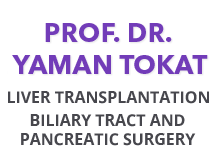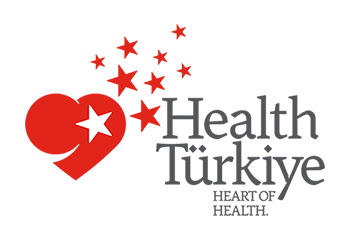Liver Transplantation (Liver Transplant)
Once doctors have informed you or a loved one that a liver transplant is necessary, there are two possible options:
- Deceased Donor Liver Transplant
- Living Donor Liver Transplant
1. Deceased Donor Liver Transplant
A liver transplant from a deceased donor can take place when the family of a person who has suffered brain death—due to a traffic accident, brain hemorrhage, brain tumor, or heart attack—consents to organ donation. Medical evaluations must confirm that the donor has no infectious disease, cancer, or liver disorder. The liver, once removed under appropriate conditions and preserved in special preservation solutions, must be transplanted within 24 hours after removal. Unfortunately, due to the extremely low rate of organ donation from deceased donors in our country, waiting lists are quite long.
If you are on the deceased donor waiting list, you should always keep a phone (preferably a mobile phone) with you where you can be reached within 24 hours. In addition, you should always carry the list of potential blood donors required for the surgery.
2. Living Donor Liver Transplant
This is a type of surgery performed using a portion of the liver taken from a relative of a patient who has liver disease and requires a transplant.
The donor must be a willing family member such as a parent, sibling, spouse, or other close relative. All tests performed on the volunteer donor must confirm that donating a portion of their liver poses no health risk. These tests are conducted in two main areas:
First; comprehensive examinations of all body systems to ensure that organ donation will not harm the donor. This includes evaluation of the heart, lungs, digestive system, and psychological condition.
Second; detailed examinations specific to the liver. These include assessing all structural features—often referred to as the “map” of the liver—along with the arteries, veins, and bile ducts.
If all evaluations are suitable, it is determined that the volunteer can safely donate part of their liver. For small child recipients, the left portion of the donor’s liver is usually used, while for adult or larger patients, the right portion is typically required.
Information Required for Liver Donors
Being able to help a loved one, giving them a chance to recover from their illness, and bringing them back to life is an incredibly rewarding feeling. Moreover, the joy of achieving this by donating a part of your own organ is truly incomparable.
Despite this beautiful sentiment, the idea of donating a portion of your liver may initially make you feel anxious. You may have concerns about how this could affect your own health in the future.
Remember that the donor’s liver begins to grow rapidly right after surgery and returns to its original size within approximately three months. Similarly, the transplanted portion of the recipient’s liver also grows and reaches normal liver size within about three months.
When you decide to donate a portion of your liver, a thorough and detailed medical evaluation will be performed to ensure that your health will not be harmed. If there is even the slightest suspicion that the procedure might pose a risk to you, your organ donation will not be accepted, and the situation will be explained to you and your relative. In that case, the next step will be to find another suitable volunteer donor.
Tests Performed on the Liver Donor
- Complete blood and urine tests
- Tumor markers
- Liver function tests
- Viral hepatitis tests
- Infectious disease tests (such as AIDS, etc.)
- Chest X-ray
- Electrocardiogram and, if necessary, echocardiography
- Abdominal ultrasound
- Doppler ultrasound for liver vessels
- Spiral CT scan for liver volume assessment
- Magnetic resonance cholangiography for bile ducts
- Angiography for liver vessels (if required)
The minimum age for liver donation is 18 and the maximum is 60. Although this is not an absolute rule, health issues observed after the age of 60 may prevent participation in this surgery. The primary requirement for liver transplantation is blood group compatibility.
| Blood Group | Can Receive From | Can Donate To |
| O | O | O-A-B-AB |
| A | O-A | A-AB |
| B | O-B | B-AB |
| AB | O-A-B-AB | AB |
* The Rh factor is not significant in organ transplantation.
* In certain special cases and in small infants, liver transplantation may be performed even without blood group compatibility.





